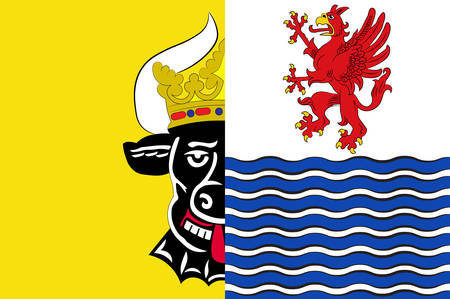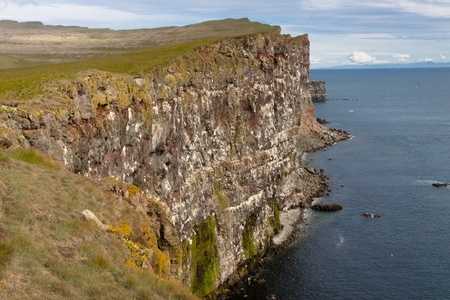Introduction to Shetland’s Far North
Nestled at the very edge of the British Isles, the far north of the Shetland Islands presents a landscape both untamed and profoundly captivating. This remote region, where dramatic cliffs meet the restless North Atlantic, embodies a wild spirit rarely found elsewhere in the UK. Rugged headlands, windswept moorlands, and secluded beaches define its geography, each shaped by centuries of elemental forces. The local culture is steeped in Norse heritage, evident in everything from place names to enduring traditions, and warmly preserved by communities who call this extraordinary environment home. For those drawn to adventure, Shetland’s far north offers more than just remarkable scenery—it promises an authentic encounter with nature at its rawest, inviting trekkers to immerse themselves in a world where every path tells a story and every vista inspires awe.
Planning Your Trek: Essential Information
Trekking in Shetland’s far north is an exceptional adventure, but preparation is paramount to ensure a safe and rewarding experience. Below, we break down the core considerations every trekker should address before setting out.
Weather Patterns and Timing
Shetland’s weather is famously unpredictable, with rapid changes that can transform sunshine into biting wind or thick fog within minutes. The best trekking months are late May to early September, when daylight hours are long and conditions are typically more settled. However, even in summer, be prepared for cool temperatures, strong winds, and sudden rain. Always check the Met Office forecast before departure and consider speaking to locals for current insights.
Transport Options
Access to Shetland’s far north is part of the adventure. Most visitors arrive by ferry from Aberdeen or by plane via Sumburgh Airport. From Lerwick, public buses service key villages, but remote trailheads may require hiring a car or arranging local taxis. For multi-day treks, plan your start and end points carefully; some routes are linear rather than circular.
| Transport Type | Availability | Notes |
|---|---|---|
| Public Bus | Regular (limited in remote areas) | Check timetables; not all routes run daily |
| Car Hire | Available in Lerwick | Book in advance during peak season |
| Taxi/Private Hire | On request | Useful for reaching isolated starting points |
Packing Essentials for Northern Treks
The exposed nature of Shetland’s coastline means packing appropriately is vital. Layers are essential for adapting to shifting conditions, and sturdy waterproofs are non-negotiable. Here’s a concise checklist:
| Item | Why You Need It |
|---|---|
| Waterproof jacket & trousers | Protection from rain and wind |
| Insulating layers (fleece/wool) | Warmth during cold spells or evenings |
| Sturdy walking boots | Navigating uneven or boggy ground safely |
| Map & compass/GPS device | Poor visibility is common on moorland sections |
| Sufficient food & water | No shops on remote stretches; always carry extra supplies |
| First aid kit & emergency whistle | Essential for self-reliance in isolated areas |
| Mobile phone & portable charger | Certain areas have limited signal; stay prepared for emergencies |
| Sunscreen & insect repellent | Shetland’s sun can be strong and midges occasionally troublesome in sheltered spots |
| Bivvy bag or lightweight shelter (for longer treks) | Extra safety if caught out by weather or delays |
Your Right of Access: The Scottish Outdoor Code
Trekking in Scotland benefits from some of the world’s most progressive access rights under the Land Reform (Scotland) Act 2003. Walkers have the right to roam across most land—provided you act responsibly:
- Avoid disturbing livestock and wildlife, especially during lambing season and seabird breeding times.
- Leave gates as you find them; close gates behind you unless they were open when you arrived.
- Respect private homes and gardens—keep to established paths near dwellings.
- Campsites should be left exactly as you found them; take all litter home.
- If in doubt, follow guidance set out in the Scottish Outdoor Access Code.
A Final Word from Experience
The Shetland far north offers rugged beauty that rewards those who come prepared and respectful of its wild character. Plan with care, pack thoughtfully, and embrace the unique freedom this northern landscape affords.

3. Exploring Unspoilt Terrain
The far north of Shetland offers trekkers a unique opportunity to immerse themselves in some of the UK’s most unspoilt landscapes. Here, the rugged coastline carves dramatic silhouettes against the North Atlantic, with towering cliffs that seem to rise defiantly from the sea. These sheer drops, punctuated by sea stacks and caves, are home to thriving seabird colonies and offer breathtaking vantage points for those who tread carefully along their edges.
Remote beaches, often untouched by footprints, await the intrepid explorer. Places such as Uyea and the golden sands at Norwick feel a world apart—silent save for the wind and waves, and perfect for moments of reflection or a well-earned rest. Wild moorlands stretch inland, blanketed in heather and dotted with freshwater lochans, supporting a diverse array of wildlife from mountain hares to nesting skuas. The shifting light over these open spaces creates an ever-changing canvas that rewards walkers in all seasons.
Navigating Challenging Terrain
While Shetland’s wild beauty is compelling, its terrain demands respect and preparation. Coastal paths can be narrow and exposed, particularly after rain when they become slippery underfoot. It is essential to wear sturdy boots with good grip, and to check weather forecasts before setting out, as conditions can change rapidly. Mobile phone coverage may be patchy in remote areas, so carrying a detailed Ordnance Survey map and compass is advisable even if you use GPS devices.
Safety Tips for Trekkers
- Keep a safe distance from cliff edges, especially during high winds or poor visibility.
- Dress in layers suitable for sudden weather shifts; waterproofs are a must even on promising days.
- Inform someone of your planned route and estimated return time—many routes are little-travelled and assistance may not be close at hand.
Local Etiquette
Respect local wildlife by observing from a distance and keeping dogs under control during lambing season or near ground-nesting birds. Remember also that many paths cross private croft land—follow the Scottish Outdoor Access Code by leaving gates as you find them and avoiding disturbance to livestock.
Trekking through Shetland’s far north is an experience that rewards both preparation and curiosity. With the right kit and a spirit of adventure, walkers will discover landscapes as untamed as they are unforgettable.
4. Dramatic Cliffs and Coastal Trails
The far north of Shetland is celebrated for its dramatic cliffs and coastal trails, offering some of the most awe-inspiring landscapes in the British Isles. These rugged pathways are not only a testament to nature’s raw power but also provide walkers with unparalleled opportunities to experience the region’s unique flora and fauna up close. For trekkers seeking both adventure and serenity, these cliff-top walks are a must.
Iconic Cliff-Top Walks
Shetland’s northern coastlines are laced with exhilarating cliff-top walks that challenge and reward in equal measure. The routes around Hermaness and Eshaness are particularly renowned, featuring sheer drops, sea stacks, and sweeping Atlantic vistas. The wind-whipped paths are best enjoyed with sturdy boots and a keen sense of respect for the elements—conditions can change swiftly along these exposed ridges.
Birdwatching Hotspots
Hermaness Nature Reserve stands as one of Britain’s foremost birdwatching destinations. Here, thousands of seabirds nest on towering cliffs each summer, including puffins, gannets, fulmars, and great skuas. Eshaness, with its dramatic volcanic geology, offers equally rich avifauna alongside breath-taking geological features like blowholes and basalt columns. For those eager to spot specific species or observe breeding colonies, timing your visit during late spring or early summer is essential.
Key Birdwatching Locations
| Location | Notable Species | Best Viewing Period |
|---|---|---|
| Hermaness | Puffin, Gannet, Great Skua | May – July |
| Eshaness | Fulmar, Arctic Tern, Kittiwake | May – August |
| Noss (nearby) | Guillemot, Razorbill, Shag | June – July |
Making the Most of Coastal Viewpoints
The North Atlantic coastline is dotted with exceptional viewpoints that showcase Shetland’s untamed beauty. From the lighthouse at Eshaness to the summit of Hermaness Hill overlooking Muckle Flugga—the UK’s northernmost point—walkers are rewarded with panoramic views that stretch across wild seas and distant islands. To maximise your experience:
- Bring binoculars: Essential for both birdwatching and appreciating distant rock formations.
- Check weather conditions: Clear days offer the best visibility; always prepare for rapid changes in wind and rain.
- Allow time for pauses: Plan your route to include stops at major viewpoints; the landscape is best savoured slowly.
- Follow local guidance: Stick to marked paths to protect nesting birds and fragile cliff-top ecosystems.
Trekking Shetland’s far north coastal trails is about more than just covering ground—it’s an invitation to immerse oneself in nature’s drama at every turn. Whether marvelling at seabird colonies or standing atop storm-battered cliffs, every step reveals another facet of this remarkable landscape.
5. Local Wildlife and Conservation
The far north of Shetland is not only renowned for its wild landscapes but also for its extraordinary biodiversity. As you trek along the dramatic cliffs and windswept moors, you’ll encounter a rich array of wildlife that calls this unique environment home. The region’s birdlife is especially noteworthy; towering sea stacks and rugged headlands host vast colonies of puffins, guillemots, razorbills, and kittiwakes during the spring and summer months. These seabirds nest in their thousands, creating a spectacle that draws ornithologists and casual walkers alike.
Marine Mammals Along the Coast
Beyond the cliffs, Shetland’s coastal waters are a haven for marine mammals. Grey seals haul out on secluded beaches while common seals can often be seen bobbing in sheltered bays. If you’re fortunate, you might spot harbour porpoises or even orcas patrolling offshore. Otters, though elusive, are also present—keep an eye out for tell-tale signs along quiet inlets at dawn or dusk.
Respectful Wildlife Watching
With such remarkable wildlife comes great responsibility. Local conservation organisations work tirelessly to protect these fragile habitats and their inhabitants. Visitors are encouraged to observe from a respectful distance: use binoculars rather than approaching nests, keep dogs on leads near breeding sites, and avoid disturbing resting seals. Stick to established paths to minimise your impact on sensitive areas.
Supporting Local Conservation Efforts
Shetland’s conservation ethos is rooted in community pride and scientific stewardship. Many reserves and nature trails are maintained by local volunteers or charities such as the RSPB and Scottish Wildlife Trust. Consider supporting these initiatives through donations or by joining guided walks led by local experts—these experiences not only enrich your understanding but contribute directly to ongoing protection efforts.
By embracing responsible wildlife watching practices, trekkers help ensure that Shetland’s far north remains a sanctuary for both wildlife and those who come to admire it. Your respect for the land and its creatures safeguards this untamed beauty for generations yet to explore its dramatic cliffs.
6. Connecting With Shetland’s People and Heritage
Engage with Local Communities
Embarking on a trek through Shetland’s far north offers more than just stunning landscapes; it is an opportunity to connect with the warm and resilient communities that call these wild islands home. Many local crofting families welcome visitors, sharing stories of their day-to-day lives shaped by both tradition and innovation. Joining a community event or visiting a local hall can provide authentic insight into Shetland’s social fabric, where hospitality is as much a part of the culture as the dramatic coastline itself.
Sample Regional Produce
No journey through Shetland is complete without sampling its renowned produce. Take time to visit farm shops and local cafés along your route, where you can enjoy fresh seafood, tender Shetland lamb, and home-baked bannocks. For those seeking an immersive experience, some crofts offer hands-on workshops in traditional baking or cheese-making, allowing you to savour the region’s flavours while supporting small-scale producers. Don’t forget to try reestit mutton soup—a hearty local classic—especially after a windswept walk along the cliffs.
Discover Norse-Influenced History
Shetland’s heritage is deeply rooted in its Norse past, which echoes through local place names, dialect, and customs. As you traverse ancient routes, pause at archaeological sites such as Broch of Northmavine or the Viking longhouse remnants near Unst. Many villages have excellent interpretive centres and museums where knowledgeable guides share tales of Viking settlers, maritime traditions, and the ongoing influence of Scandinavian culture. Engaging with local historians or attending a storytelling evening will add depth to your adventure, helping you appreciate how history shapes the people and landscape today.
Practical Suggestions for Cultural Engagement
- Seek out community noticeboards for information on ceilidhs, craft fairs, and guided walks.
- Support independent artisans by purchasing locally made knitwear or crafts.
- Take time to chat with café owners or guides—they are often keen storytellers eager to share hidden gems about their homeland.
Final Thought
By embracing these opportunities to engage with Shetland’s people and heritage during your northern treks, you ensure your journey is not only visually spectacular but also culturally enriching—a true reflection of Shetland’s untamed spirit and enduring sense of community.

